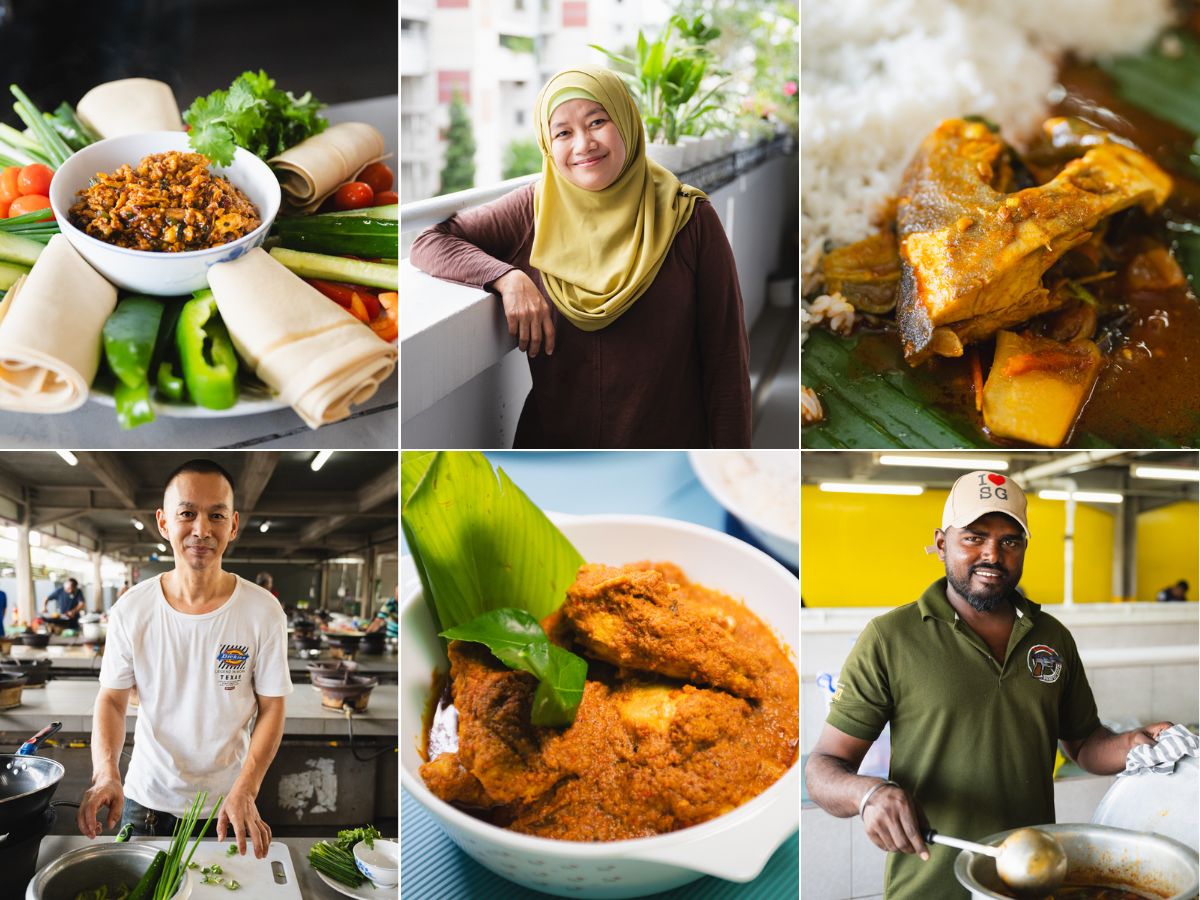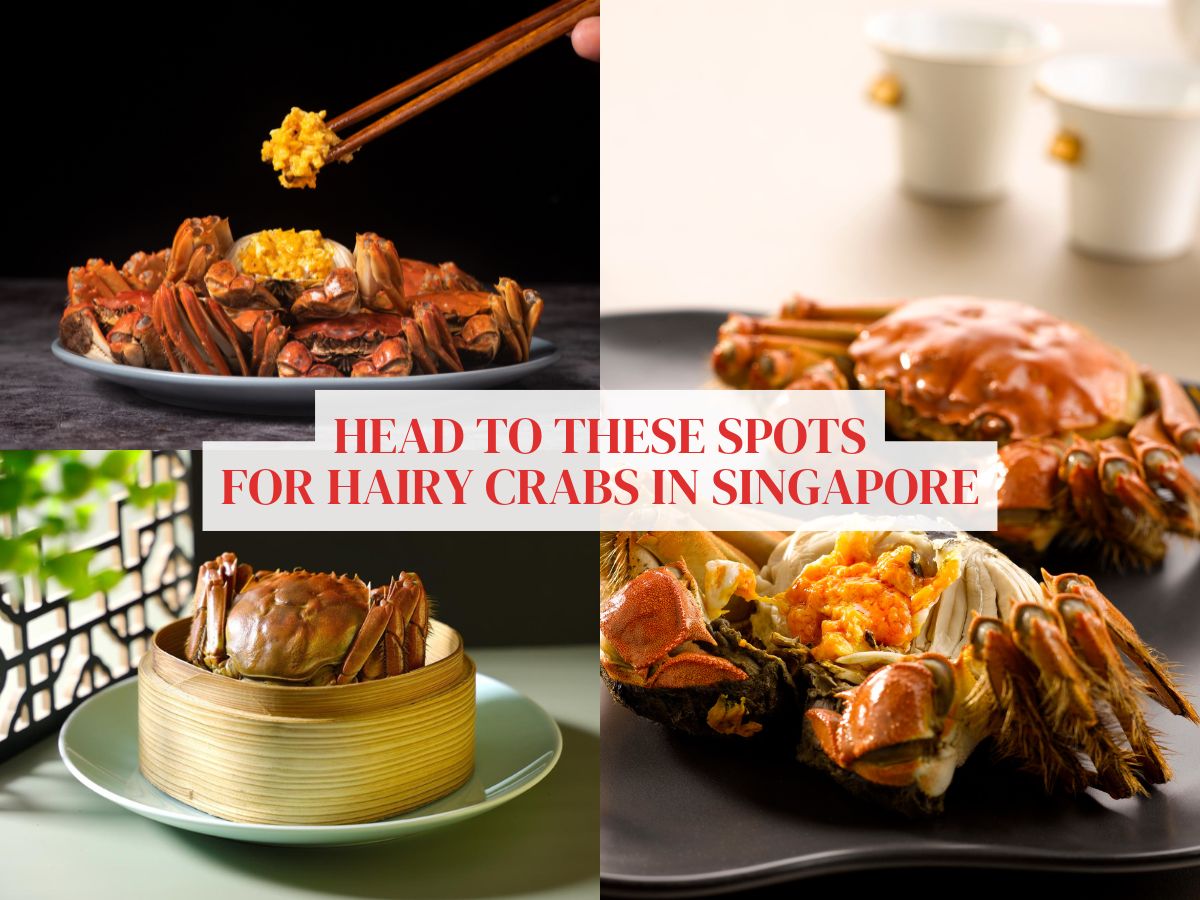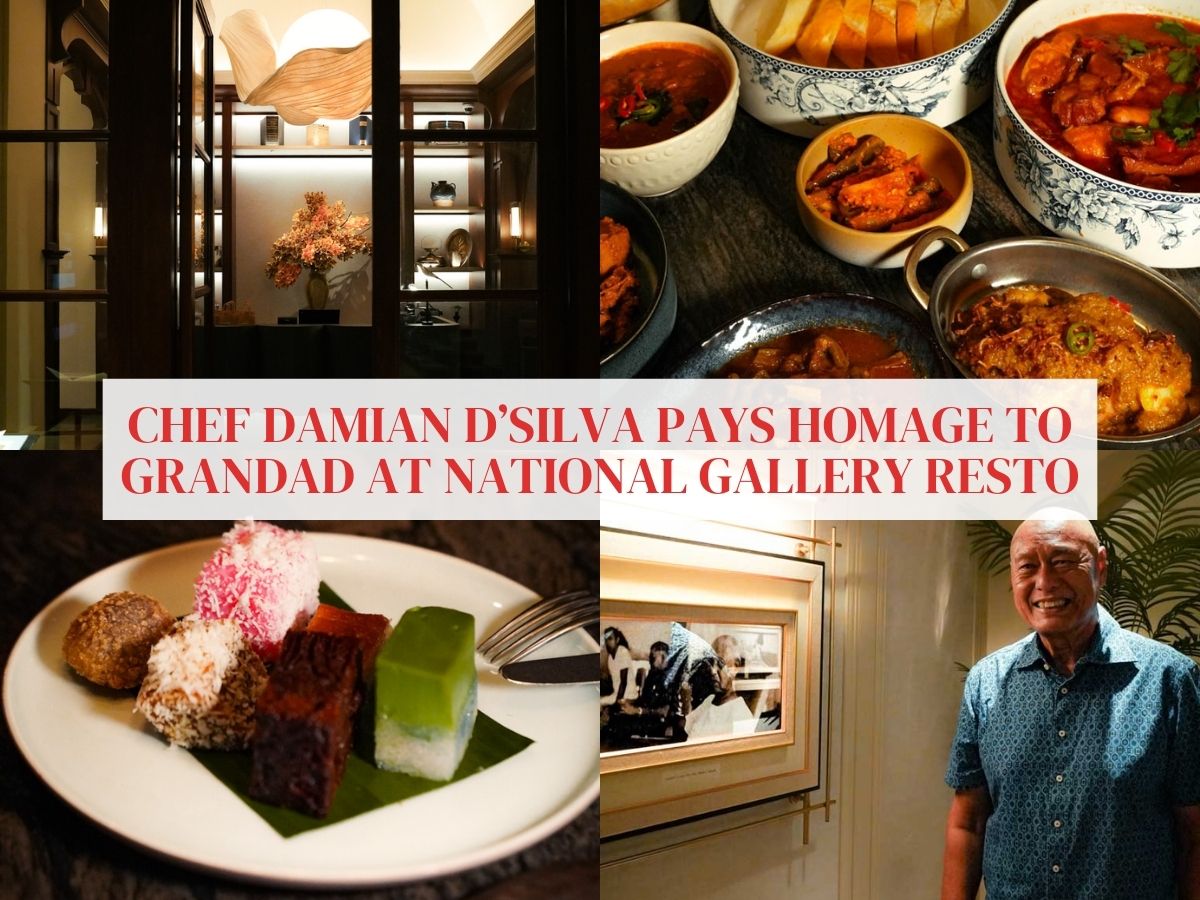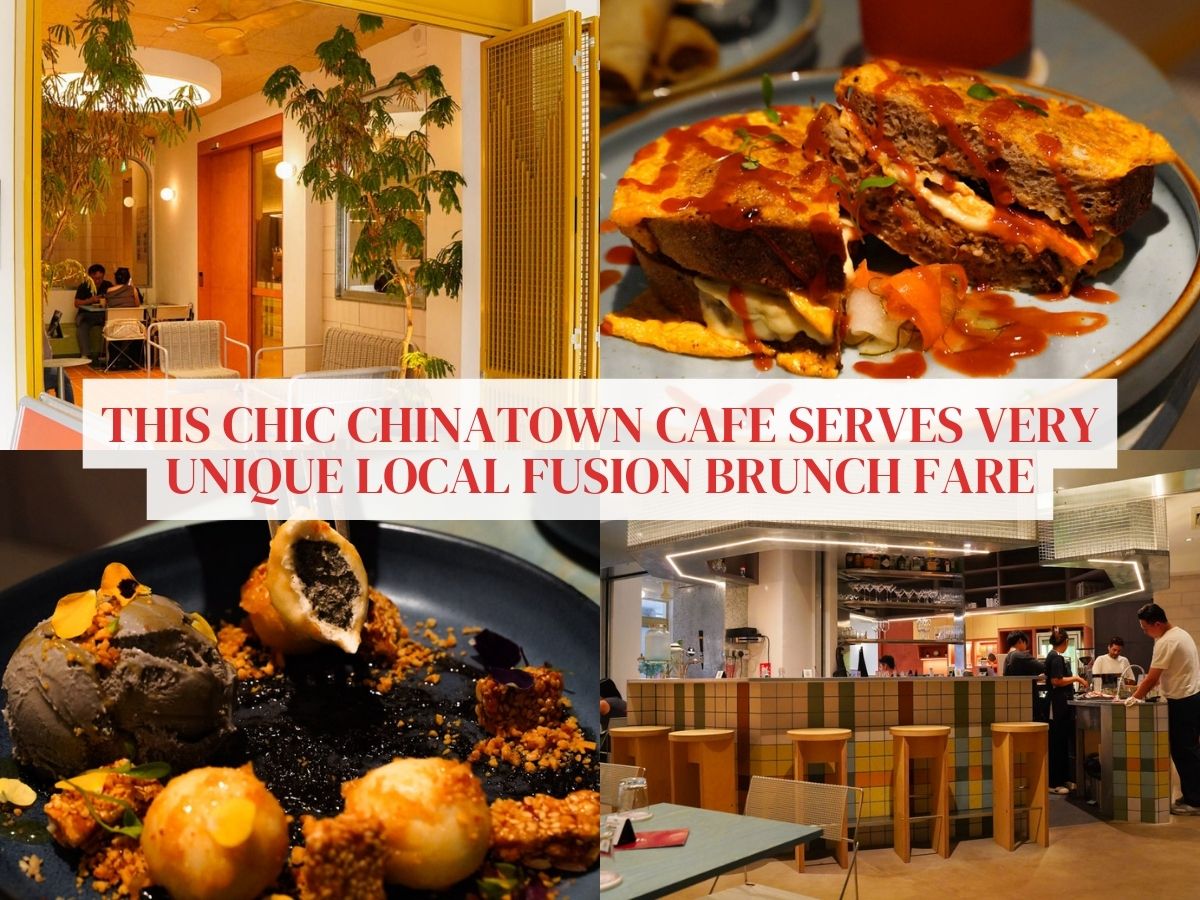What does home taste like? We tried three home-cooked dishes by our city’s migrant workers
First proclaimed as International Migrants Day by the United Nations in 2000, Dec 18 is the yearly celebration of the contributions made by millions of migrant workers to various countries all around the world.
Singapore is no exception to this: Be it taking care of our elderly or keeping our infrastructure pristine, our migrant workers are a part of the backbone that keeps our city well-oiled to meet the demands of its blistering pace.
To mark the occasion, we thought it’ll be a good opportunity to shine a spotlight on the universal connector — food.
Food transcends language and barriers, after all, and is a most fabulous way to offer a more intimate look at the lives of our oft-underappreciated migrant workers.
Luckily for us, we found a few kindred spirits who are enthusiastic about food and were willing to connect with us over some of their delicious home-cooked meals and here’s how it went!
Fish curry by Ramki Thangarasu
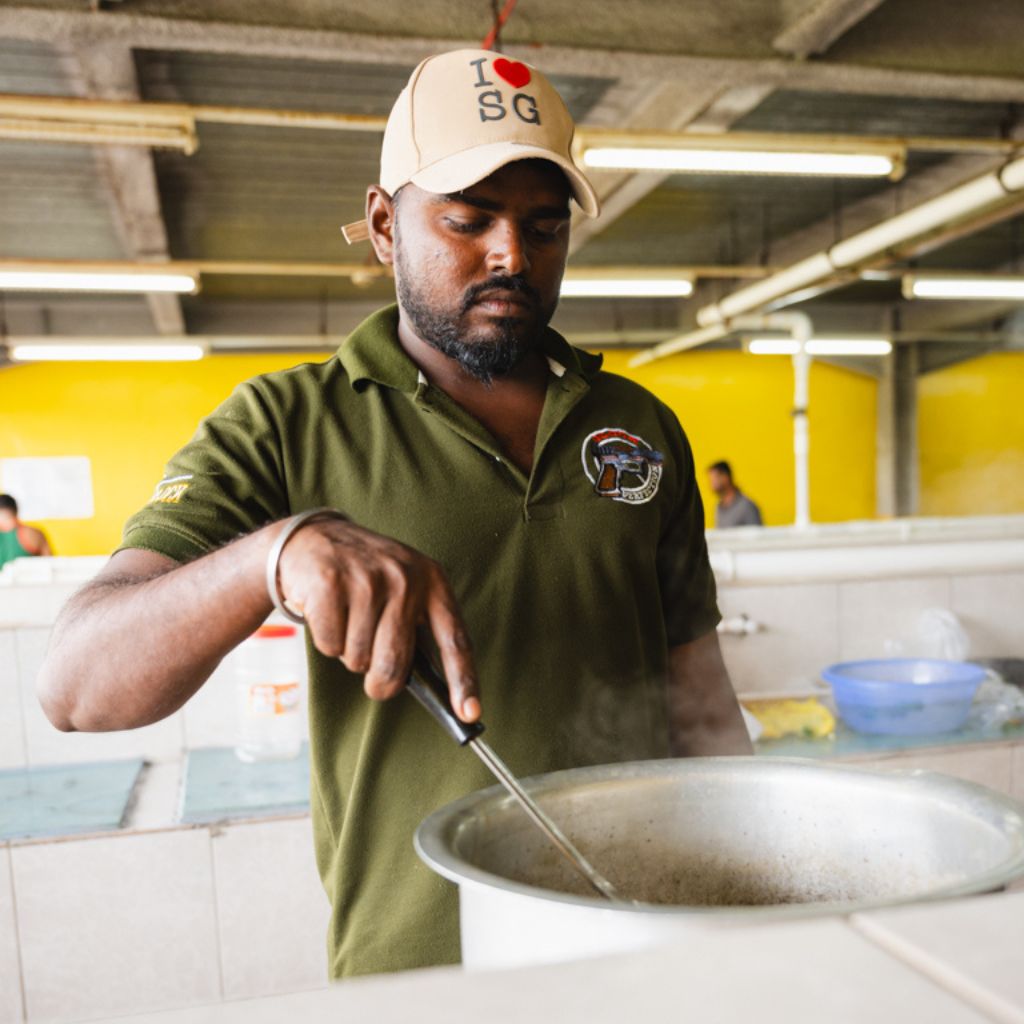
After a long car trip down to the far west of Singapore, the Tuas View Dormitory’s bright yellow facade finally came into sight.
We are welcomed by the dorm manager who ushers us into the communal cooking area — a roomy open area filled with rows of grey-tiled countertops.
Seeing as it is 11am on a Sunday morning, it is still empty but not long after, we saw our chef for the day making an entrance with a box of ingredients in tow and dressed in a sharp dark olive polo along with a quirky beige cap that reads, “I heart SG”.
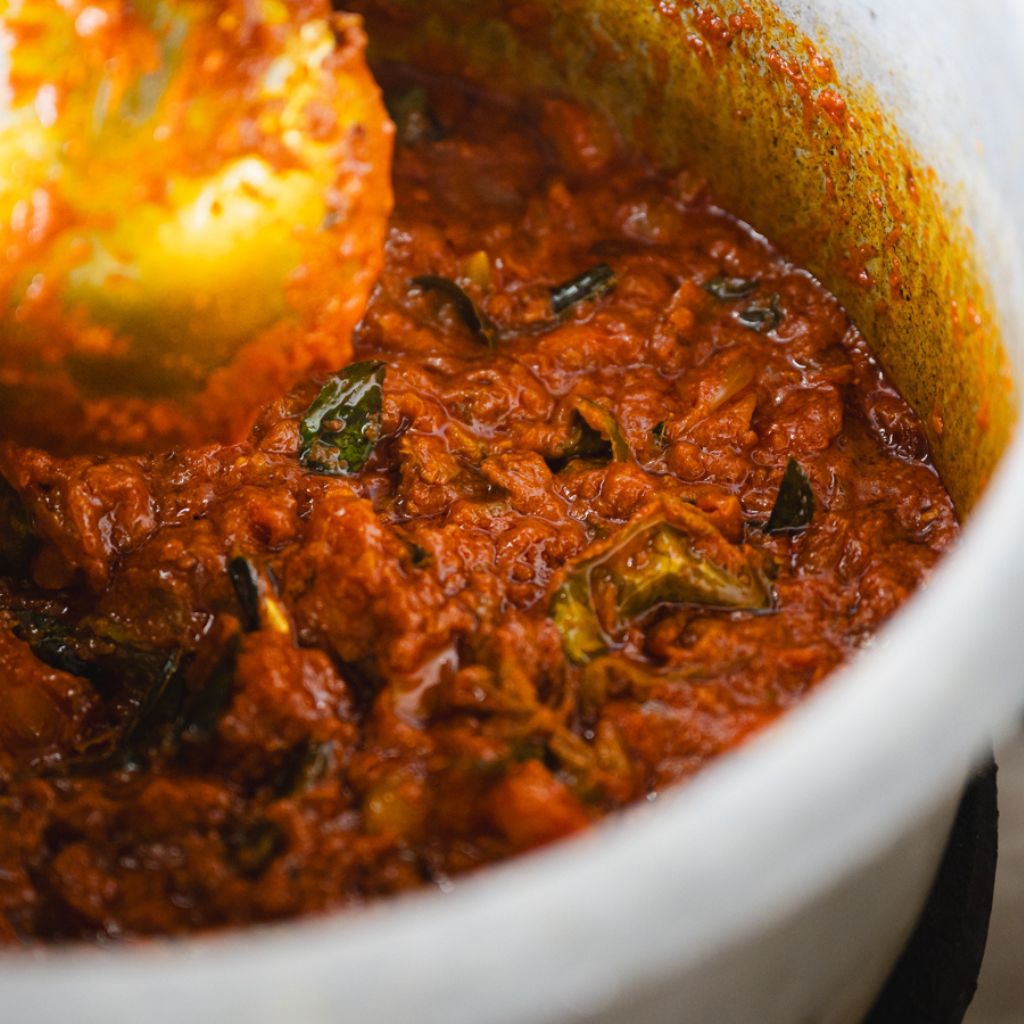
Cooking for us today is Ramki Thangarasu, a 35-year-old migrant worker who originated from India and has been working in Singapore for the past 10 years.
Prior to this, Ramki had worked as a chef in India — since the young age of 17, in fact. He decided to forgo the culinary life to work in Singapore and provide for his family after his father’s passing.

As someone who cooks every day for his dorm mates, it was no surprise that the experienced chef had his ingredients prepped and ready to go quickly.
First, he heats up a pot on the gas stove, tops it with some sesame oil and throws in a bunch of chopped-up greens and alliums.
A friend, another migrant worker who lives in the same dorm, helps with scaling slabs of filleted trevally fish while Ramki mans the stove.
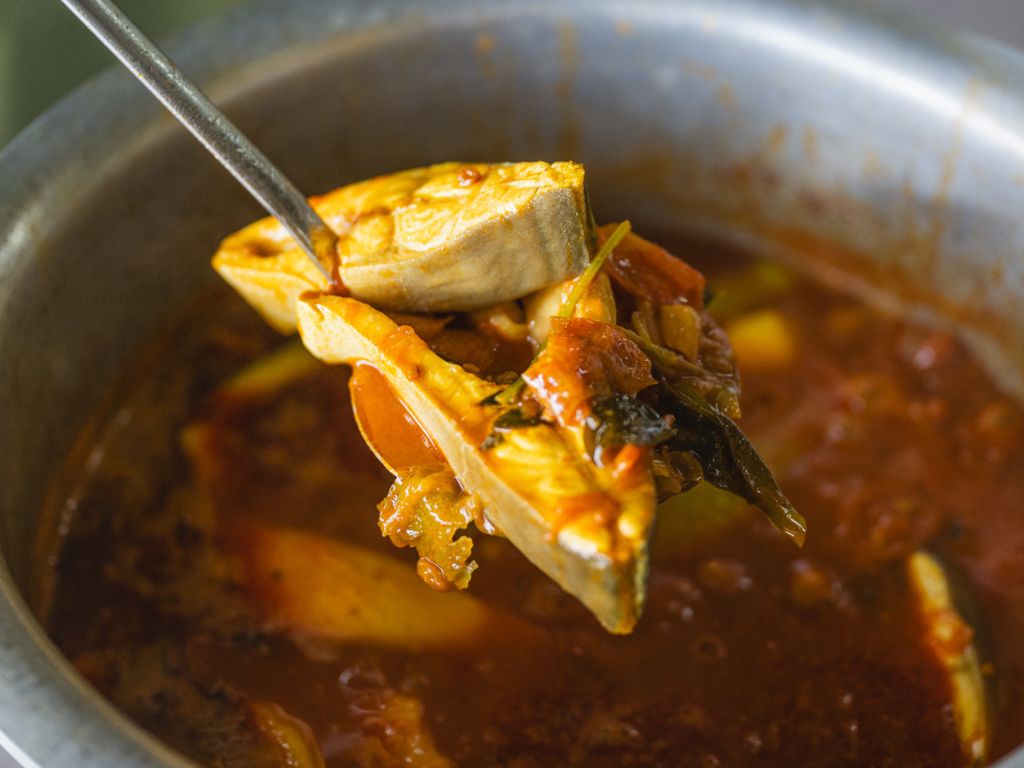
Eventually, all the ingredients — including tamarind, unripe mangos and chilli powder — are added to the mix and it comes together as a bubbling and strikingly amber-hued curry.
Ramki and his friends then bring out a large banana leaf and pile up the contents of the pot onto it. Lunch is served: It’s fish curry. Hell yeah, we love all forms of curry.
We sit down and Ramki’s entourage excitedly gestures to us to get a portion for ourselves, expectantly awaiting our verdict.
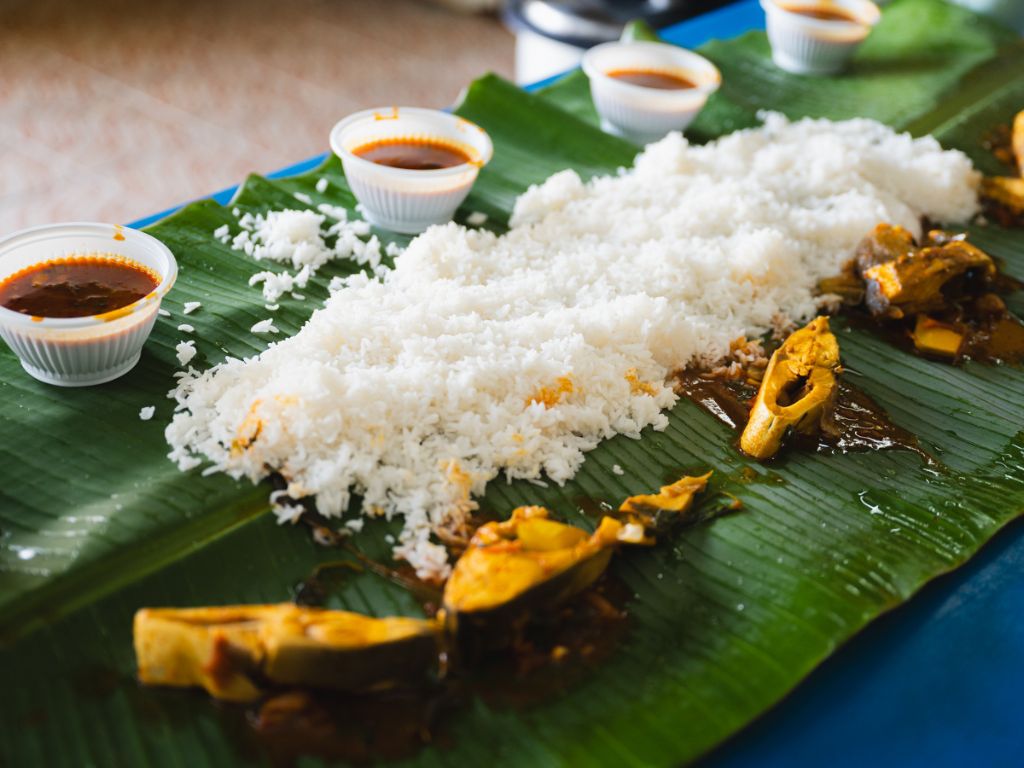
As expected, it is deliciously hearty. The curry is nicely complex and fragrant with spice-rich depth, accented by a moderate sizzle on the tongue and a tanginess to cut through the heft. Above all, the fish is delightfully tender too.
“It’s a recipe I learnt during my time as a chef,” says Ramki.
As the conversation blossoms, we find out that other than cooking, Ramki actually enjoys making TikToks with his dorm mates and has accumulated more than a thousand followers thus far with their antics.
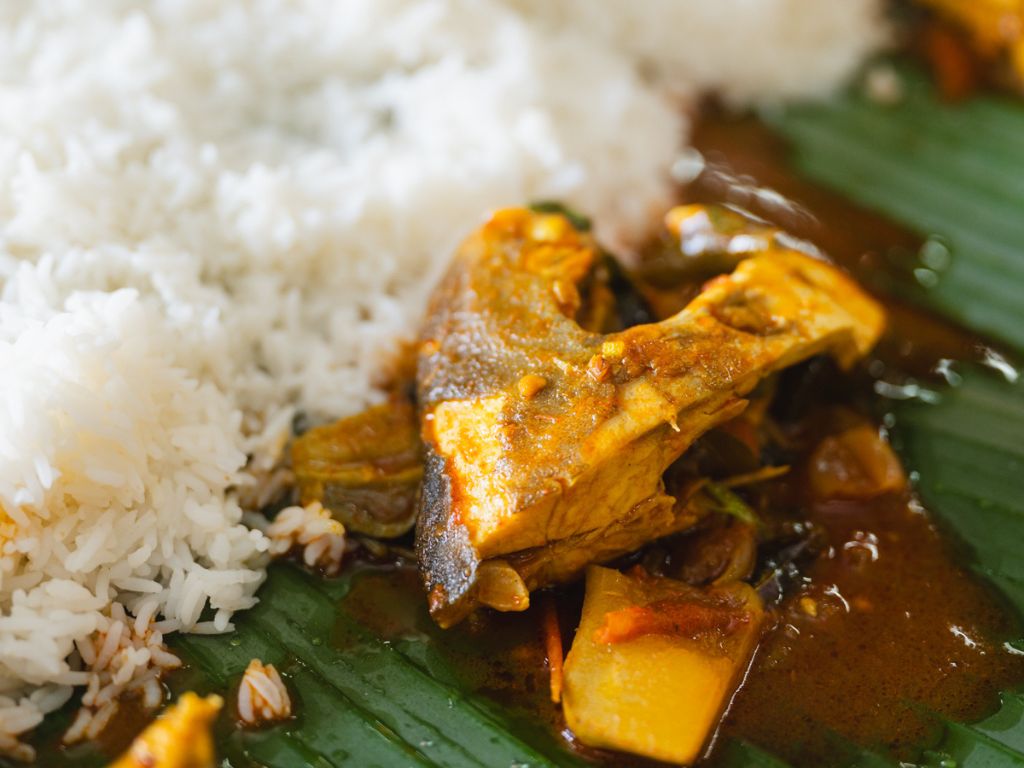
After his long stint here, he has also learnt to enjoy many of our local delights with particular biases towards nasi lemak and, while not exactly local, McDonald’s.
He also explains that he’s married with three sons and is excited by his upcoming visit home in January. He adds: “I’m excited to see them, especially my three-month-old son, whom I haven’t met yet!”
After we mopped up all the curry, the group of migrant workers also got us to squeeze together for a few group wefies. A wonderful and heartfelt memory to cap off the visit.
Zhan jiang cai by Li Sheng Bo
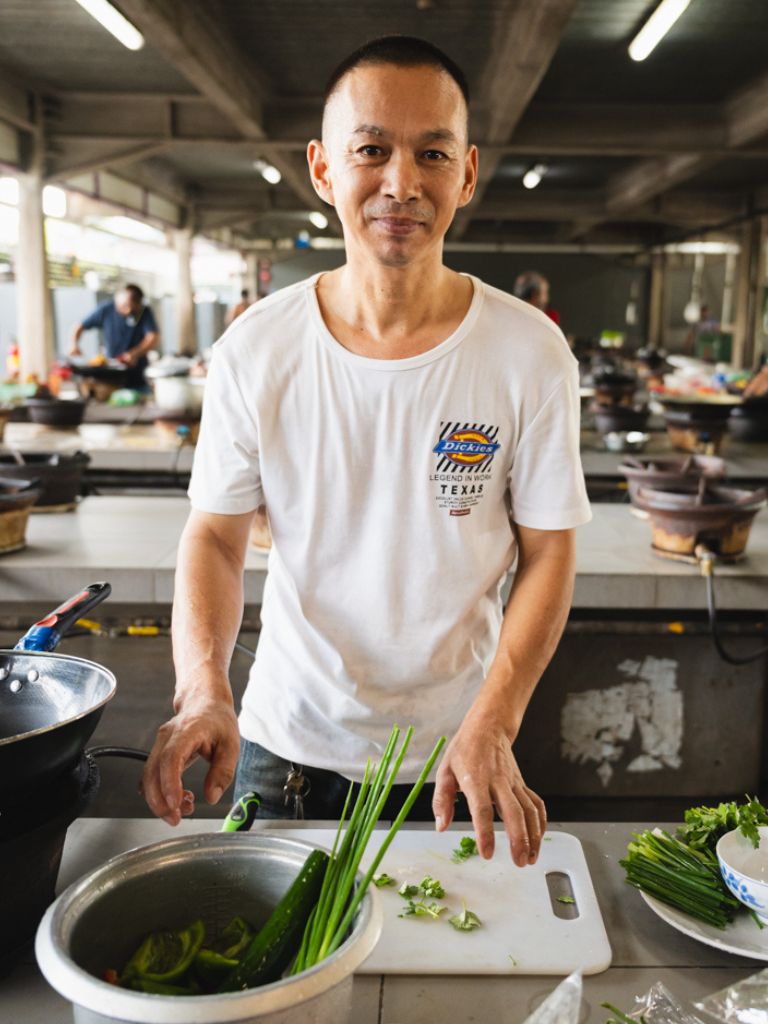
Traversing the width of Singapore, we arrived at our next stop at the opposite end of Singapore — Changi Lodge Two.
This time, the edifice came dyed in a vibrant shade of violet, but now that it’s 12.30pm, the common cooking area here is bustling with clanking woks and spurting oil.
Our chef this time is Li Sheng Bo, a 50-year-old migrant worker who hails from the Dongbei (northeast) region of China.
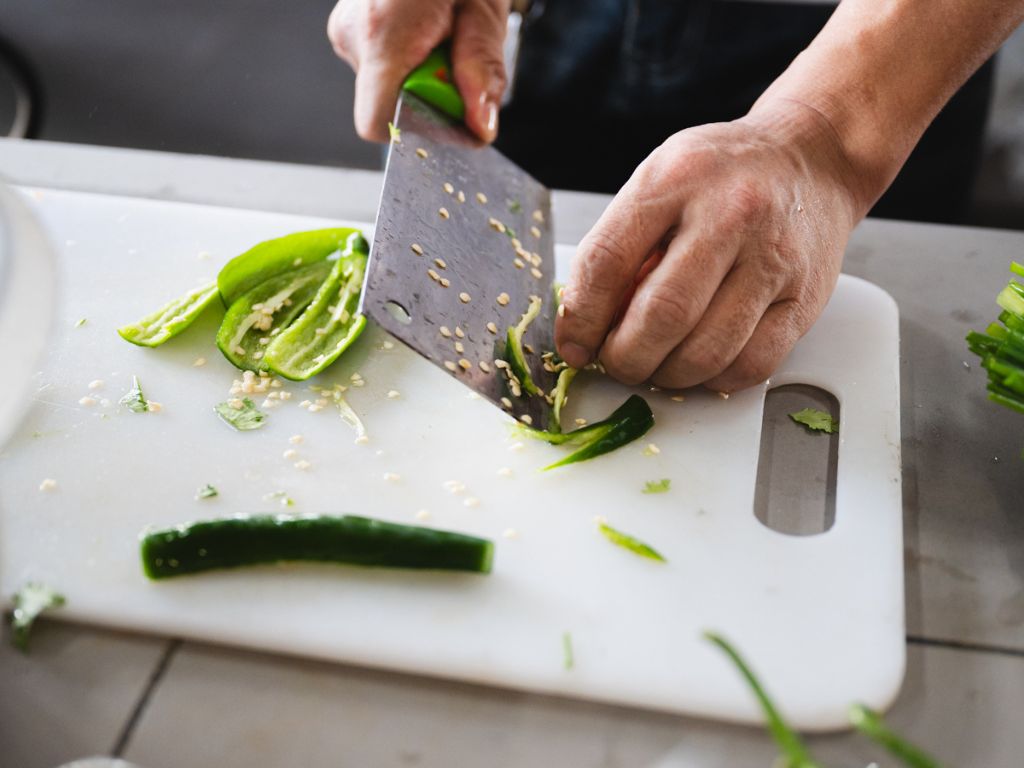
Just like Ramki, he boasts an impressive cooking resume, having run a street food stall at home and worked at various Chinese restaurants in Singapore for ten years, before he took up a position as a cleaner at the dorm itself.
The trained cook swiftly and precisely slices through a myriad of veggies, including capsicum, parsley and spring onions, and neatly arranges them onto a plate, encircling a bowl in the middle.
He then heats up the wok and throws in a motley of eggs, bean paste and minced meat, before giving it a good churn and emptying it into the bowl.
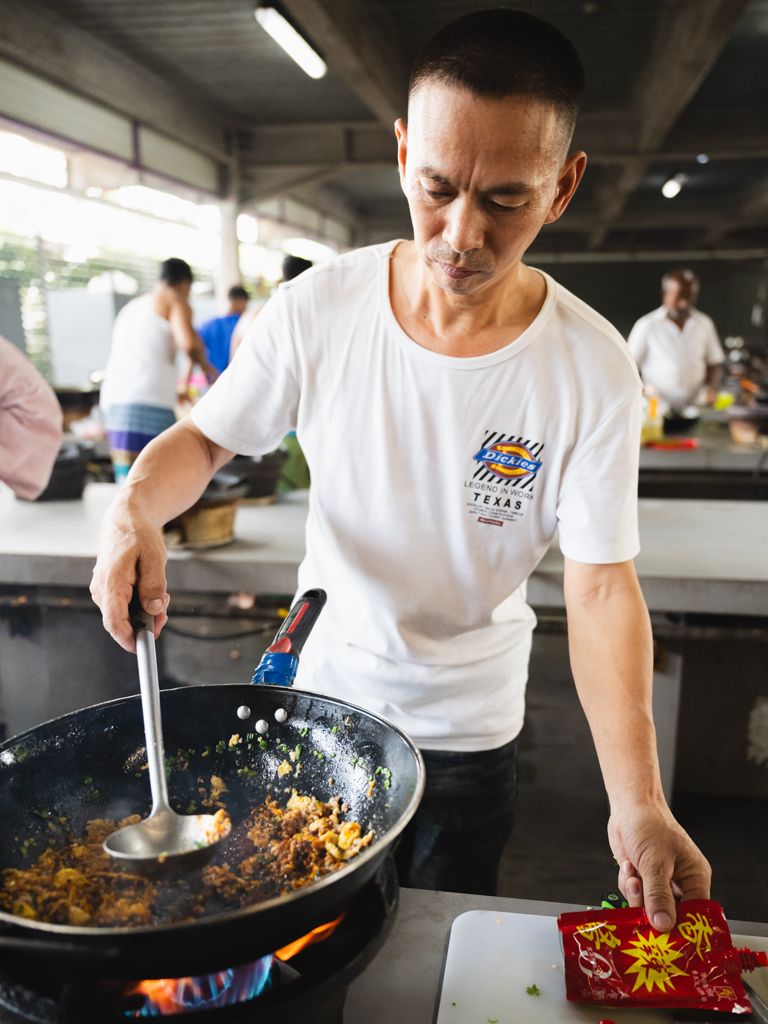
This was his highlighted dish: The zhan jiang cai, a tasty ensemble of dip and raw ingredients.
Literally translated as “dipping sauce dish”, it’s a rustic traditional dish that can be found in locales throughout Dongbei. Sheng Bo’s rendition is based on the Dongbei style, but with the spice level toned down.
While looking exceptionally simple, the dish is a delight. Everything revolved around the decadent dipping sauce — flavourful, slightly unctuous and given just enough of an enlivening spicy kick.

The way to eat it is simply to pick up a piece of beancurd skin to use as the base and freestyle it, choosing your favourite accompaniments to go with the sauce.
Upon Sheng Bo’s recommendation, we loaded it up with a simple duet of scallions and cucumber, liberally topping it with the chunky sauce — straightforward but comforting.
“This dish is a ubiquitous one, which most locals know how to make. It’s also perfect as a side dish to any meal or a drinking session,” he says.

Speaking about home, he articulated a fondness for the migrant worker life in Singapore, particularly his current role, and that he hopes to continue working here in the future.
But he’ll first be returning to China for a while to attend his eldest daughter’s wedding next year, especially after a prolonged absence that predates the pandemic.
Curious about his preferences for local cuisine, given his experience as a cook here, we pressed him about his favourite local flavours.
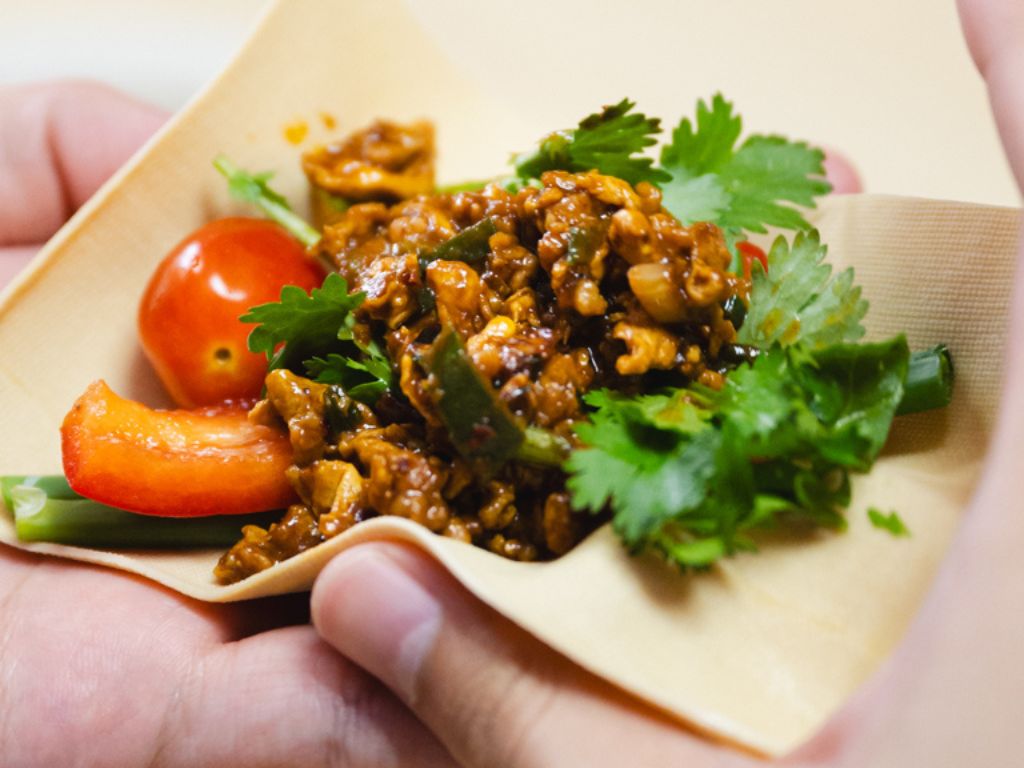
As far as local hawker delights are concerned, he fancies many of the simpler pleasures, including chicken rice and fish head hotpot.
It also turns out that Sheng Bo actually enjoys many of the Dongbei-style restaurants around our Chinatown. He says: “It’s not too bad and isn’t that much different from what I can get at home.”
After we demolished his zhang jiang cai, our chef of the hour unfortunately had work to attend to at the dorm, but we exchanged thanks, congratulated him once again on the wedding and wished him well for his long-deserved trip home.
Chicken rendang by Eti Kurniati

We are dropped off at a HDB estate somewhere in the northeast of Singapore, where we quickly found our way to the lift to bring us up to our destination — a corner unit on a higher floor.
Moments after ringing the doorbell, we are warmly welcomed by Eti Kurniati, a 42-year-old migrant worker from Indonesia who is working as a domestic helper for a local family.
The house is immensely cosy and well-furnished and even though the rest of the family are out, Eti makes sure we feel at home with a slew of iced refreshments to beat the sweltering heat.
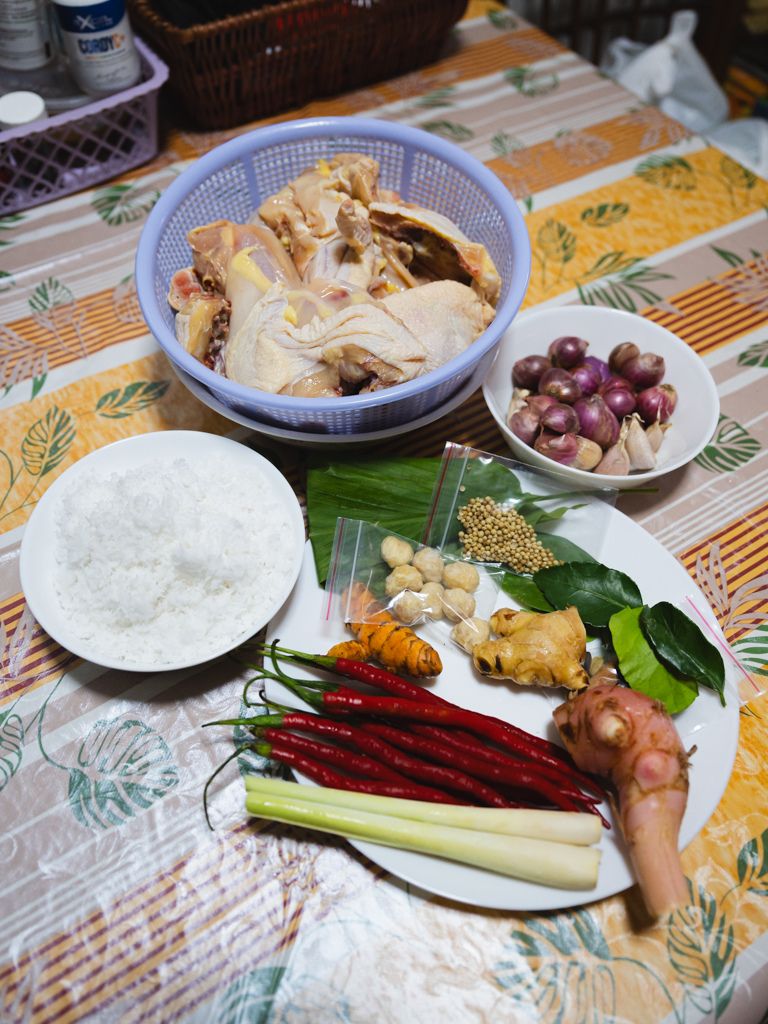
Eti has been working in Singapore since 2007 and has been a crucial part of five families. In particular, she has struck up a great rapport with ‘Nenek’, the grandmother and matriarch of her current family.
Fun fact: The current family also happens to be her first in Singapore, who she eventually returned to, after various placements.
Their relationship is so good that the entire family visited Eti’s native Indonesia for a holiday in 2023 and met up with her husband while there.
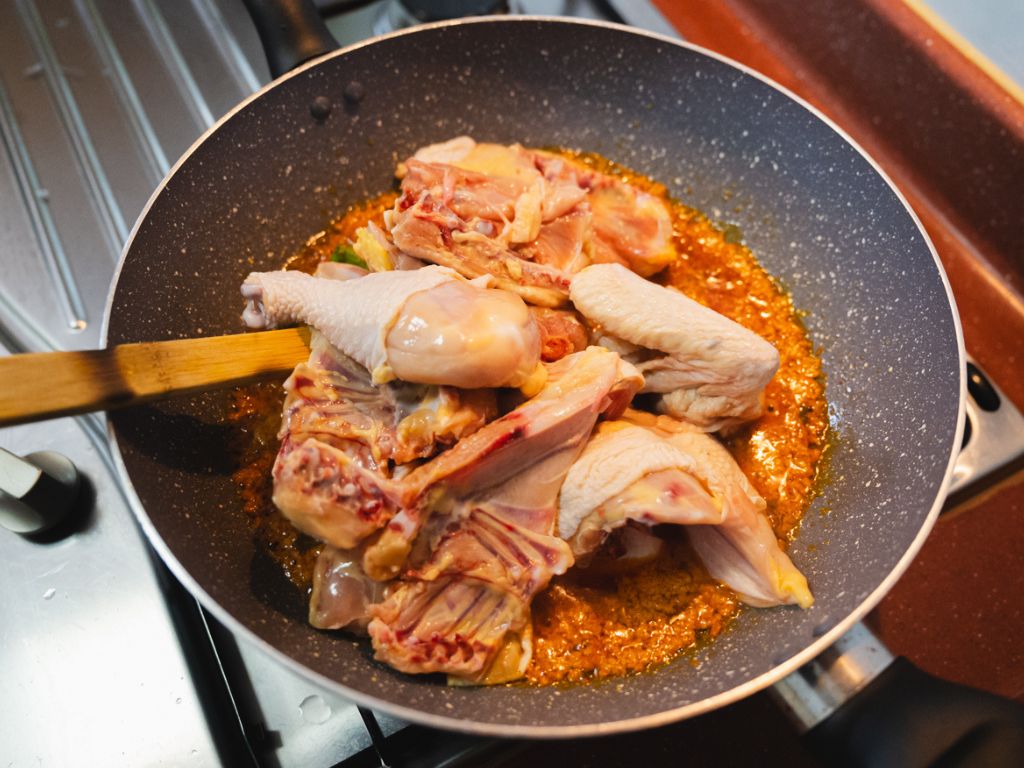
After settling in, we are invited to the kitchen to watch her whip up her signature dish. She grinds up the ingredients and lets it cook for a while in a pan, before heaping cleaved-up chicken parts onto the reddish-orange paste.
It is left to simmer for a while, but the exuberant scents of coconut and spice quickly waft through the house and soon, a large bowl of chicken rendang is served.

Inspired by the Padang-style (cuisine by the Minangkabau people of West Sumatra) recipe of the dish, Eti’s rendang isn’t as sweet as our local version and is imbued with a more nuanced spice profile, with plenty of savoury oomph.
The chunks of chicken are silky and tender, while the gravy makes for an absolutely scrumptious topping for plain rice.

More discerning foodies would notice that the rendang isn’t cooked with beef, as it usually is, but that’s because Eti tweaks her recipe to fit her family’s palate.
“My boss likes chicken, so I try to cook every dish with chicken. Even my asam pedas is also cooked with chicken!” she quips.
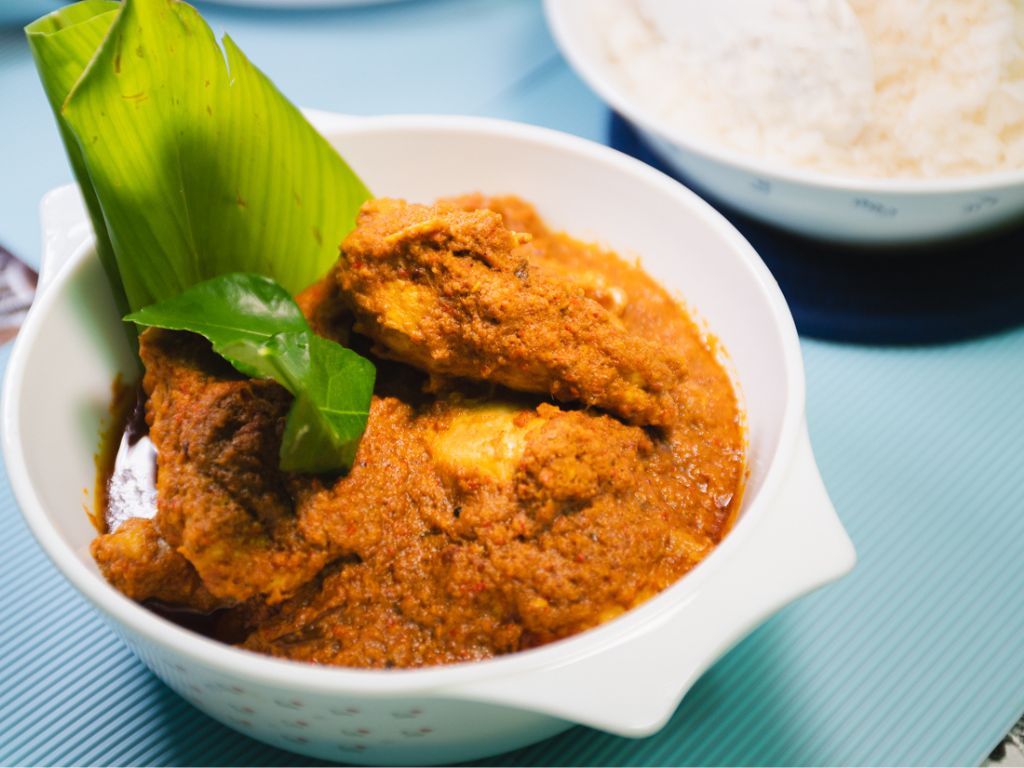
In fact, Eti enjoys learning new dishes and cooking styles from different cultures.
When she first came to Singapore, she learnt that local Malay food also differs significantly from what she knew at home.
She’s since added a diverse range of recipes to her arsenal. Says Eti: “My first employers were Malay and I learnt a lot of recipes, including nasi lemak and nasi ayam. Then I went to work for British and Indian families and also learned to cook their food.”
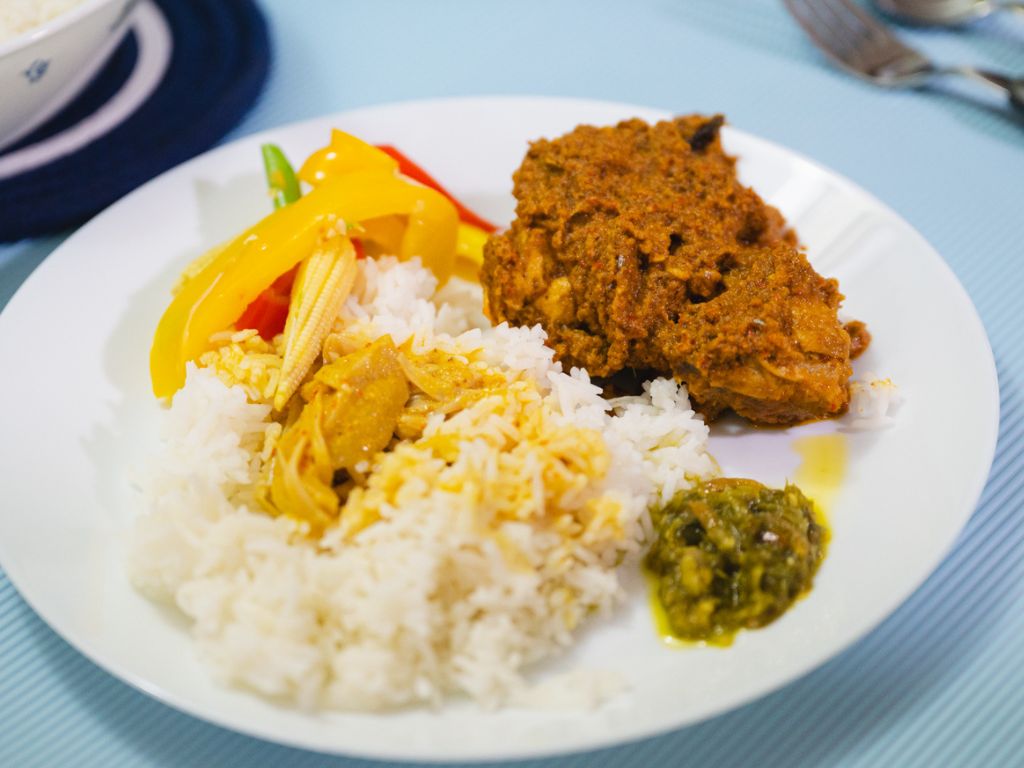
As we prepare to tuck in, the genial Eti then offers us even more grub, including a jackfruit stir-fry and kripik (crisps).
We try a little bit of everything and are filled to our brims at the end of the meal — a perfect end to our food journey with our city’s migrant workers.
Our Migrants’ Kitchen

If any of the recipes intrigued you and you wish to learn more, then you need to hear about “Our Migrants’ Kitchen”, a collaboration between the Ministry of Manpower and various migrant workers.
To mark International Migrants Day, the Ministry of Manpower has put together a book titled “Our Migrants’ Kitchen”, a treasure trove of culturally-diverse recipes from the many migrant workers of our city.
Incidentally, two of our migrant-worker chefs also contributed two of the book’s 18 recipes! Take a look if you want to try your hand at the zhan jiang cai or chicken rendang.
The book is available for free download in digital format.
For more ideas on what to eat, read our stories on the coolest, newest places to check out in Singapore and a megalist of the tastiest restaurants you can find in Tanjong Pagar.
